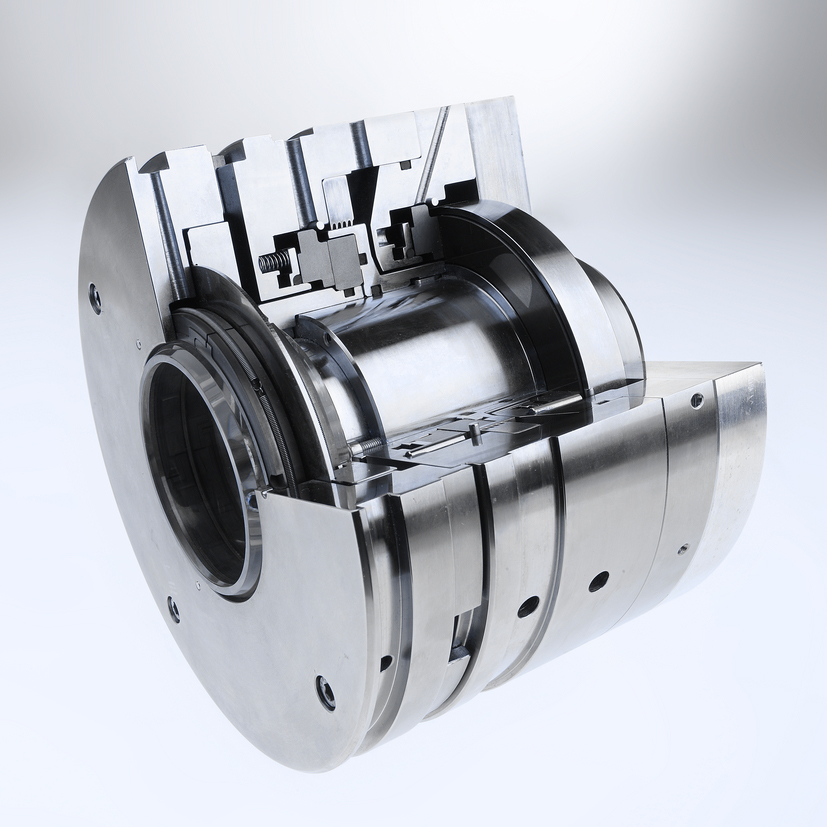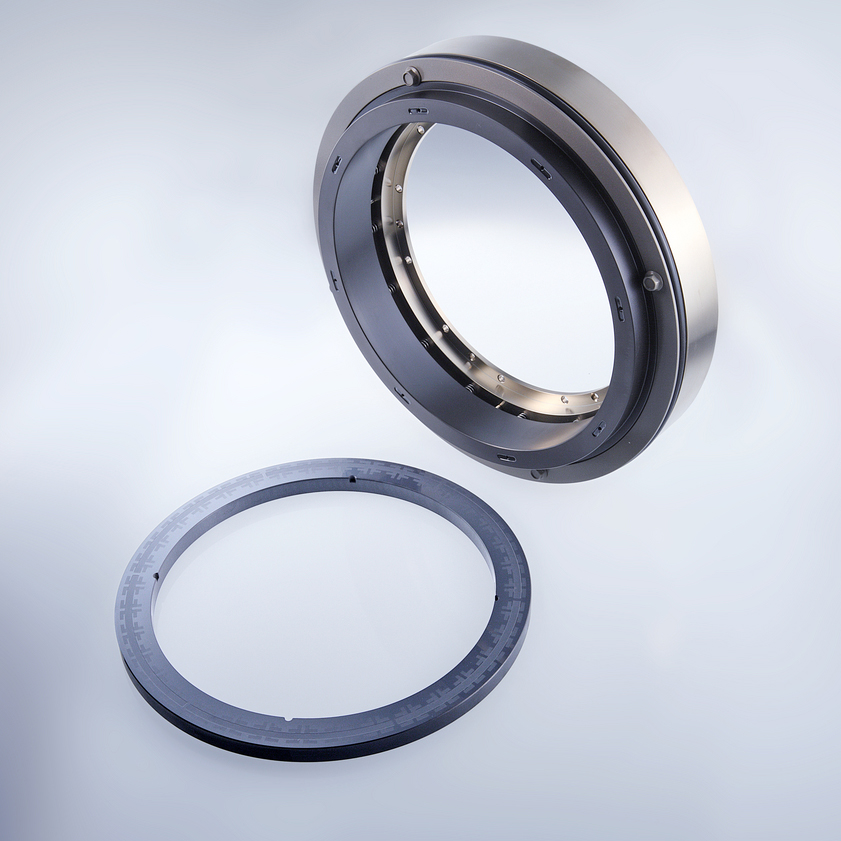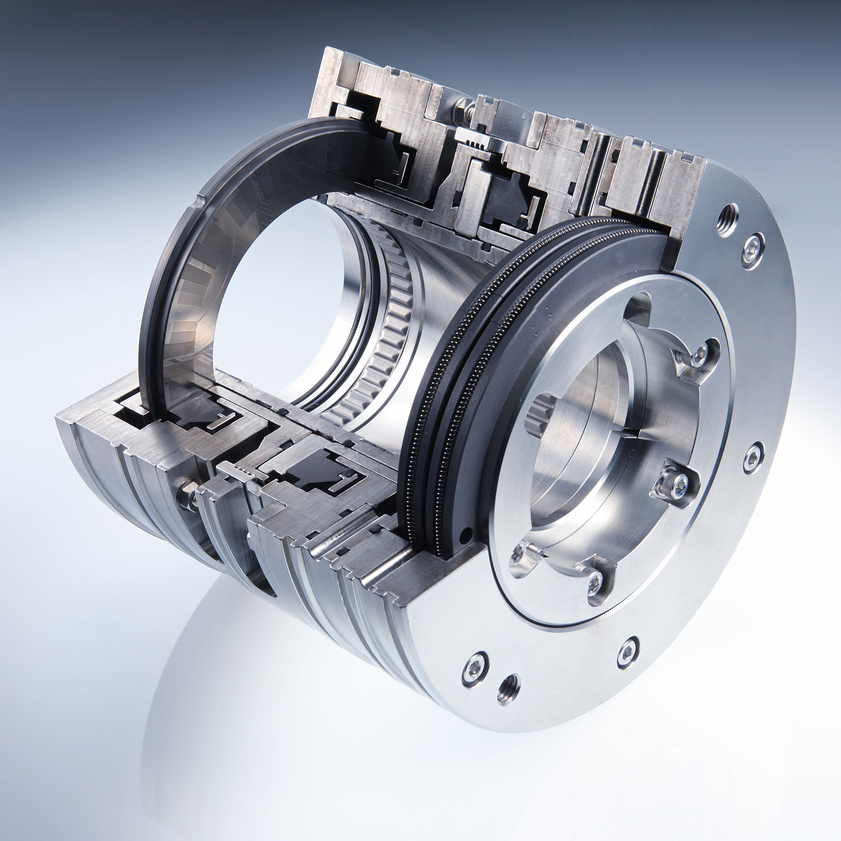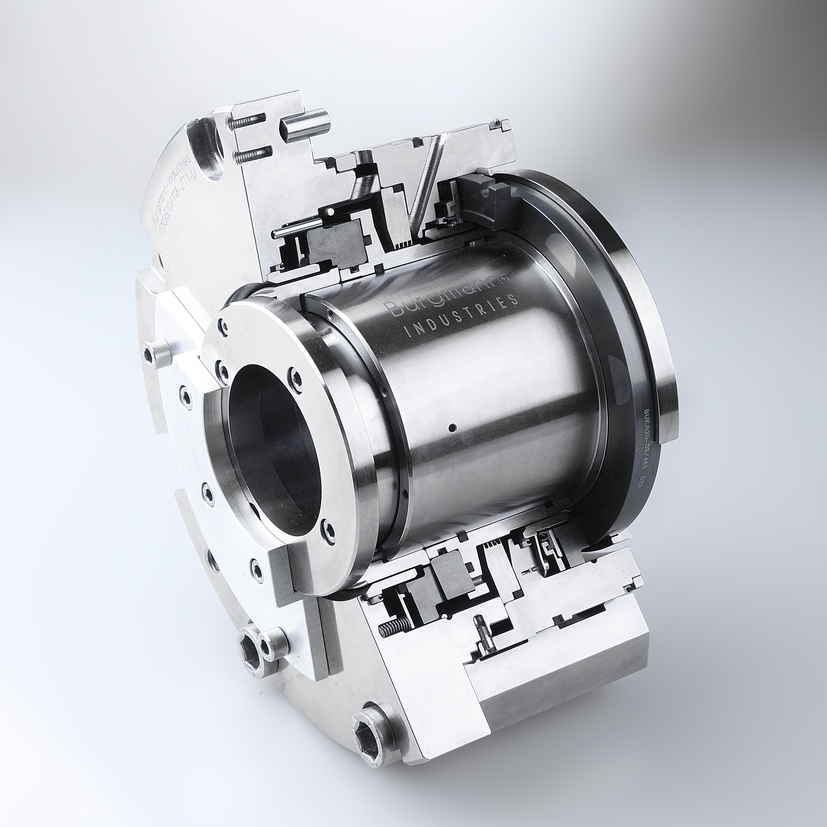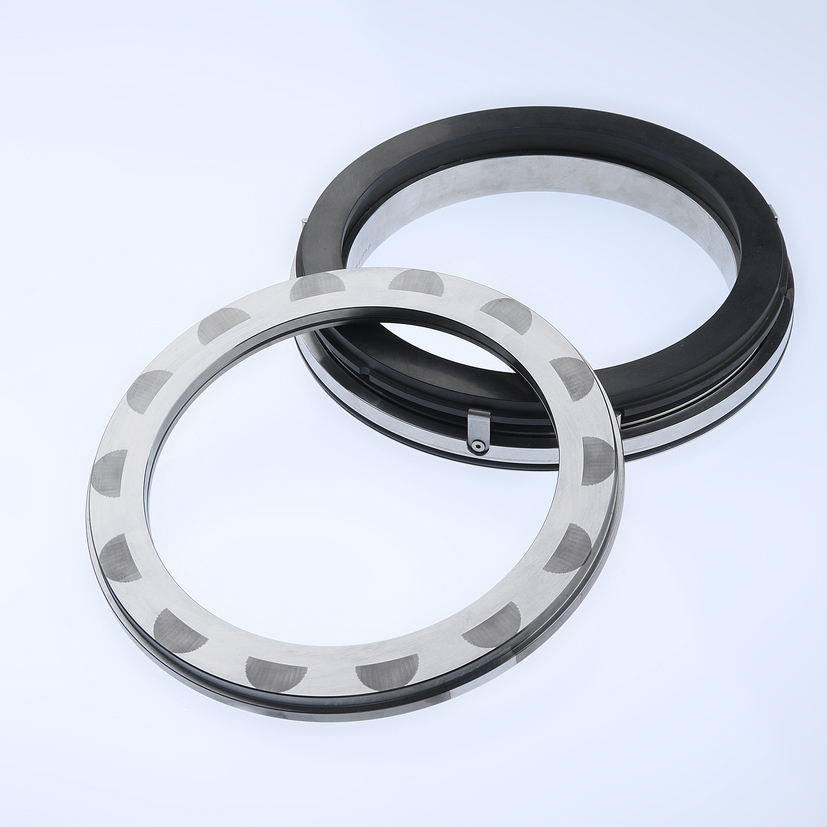PRODUCTS
DGS
Gas-Lubricated Seal
Feature
- Gas-lubricated
- Unidirectional or bidirectional available
- Ready-to-fit cartridge unit
- Single, Dual, Tandem and Tandem with intermediate labyrinth available
Product specification example
Standards and approvals
NACE
Materials
Seal face: Silicon carbide (Q1) with DLC coating
Seat: Silicon carbide (Q1) with DLC coating
Secondary seals: FKM (V)*
Metal parts: 1.4006 (SS410) or other stainless steels
* Or other materials depending on product gas composition.
Operating range
Pressure: p = 0 … 100 bar (1,450 PSI)
Temperature: t = -20 °C … 200 °C (-4 °F … 392 °F)
Sliding velocitiy: vg = 0.6 … 200 m/s (2 … 656 ft/s)
Recommended applications
Oil and gas industry
Refining technology
Petrochemical industry
Hydrocarbon gas
Ammonia
Nitrogen
Air
Centrifugal compressors
Turbo expanders
Blowers
Installation, Details, Options
Separation seals as labyrinths, contacting (CSE), non-contacting (CSR) or aerostatic (CobaSeal) bushing seals are optionally available.
Product variants
DGS Tandem seal
Application: Where small product leakages of process gas are admissible, e.g. on gas pipeline compressors. Seal on the atmosphere side acting as a safety seal.
The tandem arrangement provides a particularly high degree of operational safety. The seal on the product side and the seal on the atmosphere side are able to absorb the complete pressure. Under normal operating
conditions the full pressure is reduced only by the seal on the product side. The space between the seal on the product side and the seal on the atmosphere side is cleared by a connection “B” to the primary vent (flare).
The pressure to be sealed by the seal on the atmosphere side equals the primary vent pressure, so the leakage to the secondary vent (atmosphere) is very low. If the main seal fails, the second seal acts as a safety seal.
DGS Tandem seal with intermedia labyrinth
Application: Where product leakages to the atmosphere as well as nitrogen leakages (from a
dual seal) to the product are inadmissible, e.g. on H2, ethylene or propylene compressors. With this arrangement the pressure to be sealed is reduced via the primary seal on the product side and the entire process gas leakage is discharged via connection “B” to the primary vent. This is ensured by supplying the atmospheric side seal with secondary seal gas (nitrogen) via connection “C”. The pressure of the secondary seal gas ensures that nitrogen flows via the
labyrinth to the primary vent connection “B” together with the complete process gas leakage.
DGS Dual Seal
Application: Where product leakages to the tmosphere are inadmissible and tandem arrangements are not suitable because of too small product gas pressures. Buffer gas leakages into the product must be admissible (buffer pressure p3 > p1). This seal is used when a neutral buffer gas of suitable pressure is available. Typical applications are to be found mainly in the chemical industry, e.g. on HC gas compressors. A buffer gas, e.g. nitrogen, is fed between the seals via connection “C” at a higher pressure than the product pressure. One part of the buffer gas leakage escapes to the atmosphere side and the other part to the product.
Applicable ranges, performance data and figures can serve only as a guide for selection and therefore in actual use there will be some cases where general specifications cannot be applied due to unknown factors or constraints.
Please check the applicability before use.
The contents are subject to change without notice for improvement.
Download Documentation














